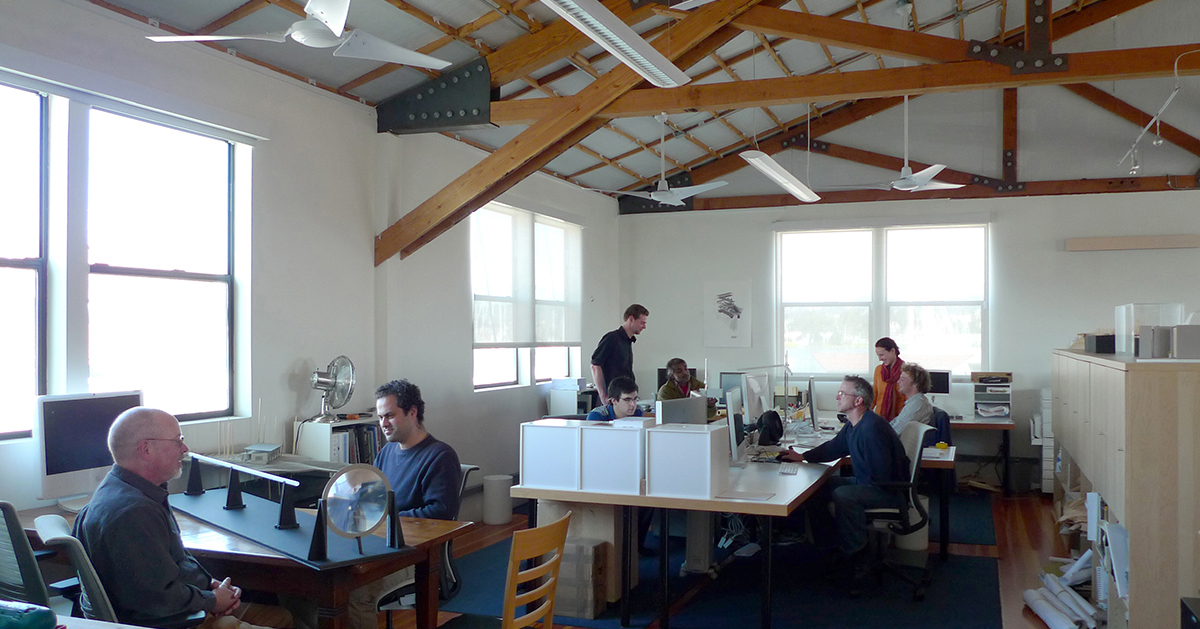Natural ventilation for energy savings in California commercial buildings.
Status: Completed
Funding Sources: California Energy Commission PIER Program CBE Industry Consortium
Project Objective
The goal of this study is to establish the ranges of indoor environmental conditions that can be comfortable in a naturally ventilated (NV) office building using operable windows and within-room fans. We also hope to better understand the physical characteristics creating the NV environment, and the role of occupant behavior.
Project Results
The overall outcome of this program is a comprehensive study of the current issues concerning retrofitting commercial buildings in California and an assessment of the potential risks and benefits. It has also significantly extended the capabilities for modeling, design, and operation of naturally ventilated buildings in California.
Research on wind-driven natural ventilation using computational fluid dynamics and wind tunnel tests provided new algorithms for cross ventilation, single-sided ventilation and corner ventilation, accounting for opening size, location and number, and the effects of sheltering by neighboring buildings. These algorithms were implemented in EnergyPlus, and the new version of the code was used in three training sessions to provide the design and engineering community with some familiarity in the new modules that calculate natural ventilation.
Significance to Industry
For many years, almost all new commercial buildings have been air conditioned, mechanically ventilated, and filtered because the private sector has believed that these actions are necessary to maintain acceptable indoor environmental quality, despite the high energy costs. The market will not substantially adopt energy-efficient natural ventilation until we can provide the technical guidance and tools to assure that acceptable indoor environmental quality can be maintained an appropriate percentage of time. Providing such evidence and technical approaches to the market place is the focus of this project.
Research Approach
This research program investigated the potential energy savings to be gained by retrofitting non-domestic buildings in California with natural ventilation for cooling. The simplest and most cost effective retrofit is to open windows on the façade and turn off any mechanical ventilation. To make the problem tractable, attention was restricted to wind-driven natural ventilation. Stack-driven ventilation is likely to also be present in practice, and usually improves the cooling potential.
The program was split into three major projects. Project 1 assessed the potential of and the barriers to the implementation of natural ventilation. Project 2 examined induced air movement and the possible ingress of outdoor pollutants. Project 3 produced new tools for predicting the energy performance of naturally ventilated buildings, and provided training in their use.
Collaborators on this project include CPP, Arup, Cambridge University, UC San Diego, and the Environmental Energy Technologies Division at Lawrence Berkeley National Laboratory. The researchers are grateful to the occupants of the primary case study building, Loisos + Ubbelohde Architecture and Energy, in Alameda, California.
Publications and Reports
Linden, P., K. Adams, D. Banks, N. Daish, E. Arens, S. Brunswick, M. Fountain, G. Gross, A. Honnekeri, M. Pigman, R. Thomas, S. Dutton, R. Gerard, P. Haves, M. Hovanec, et al. 2016. Natural ventilation for energy savings in California commercial buildings. Final Project Report, California Energy Commission. June. 516 pp.

